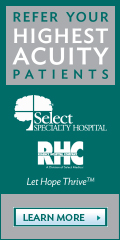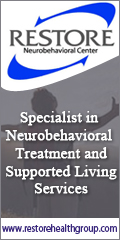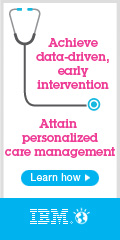The Impact of Health Information Technology on Case Management: Moving Toward a Paperless Environment
 Print this Article | Send to Colleague Print this Article | Send to Colleague
 The Impact of Health Information Technology on Case Management: The Impact of Health Information Technology on Case Management:
Moving Toward a Paperless Environment
Pat Stricker, RN, MEd
Senior Vice President
TCS Healthcare Technologies
Today, more than ever, case managers face enormous challenges when it comes to understanding how the various health information technology (HIT) options affect care management, as well as how the rapid transformations in the health care industry will impact their daily routines.
In 2008 and 2010, the Case Management Society of America (CMSA), the American Board of Quality Assurance and Utilization Review Physicians, Inc. (ABQAURP), and TCS Healthcare Technologies (TCS) co-sponsored the Health IT Survey. The organizations have reunited to conduct the third release of the bi-annual survey, providing an up-to-date view of health IT trends and their impact on the practice of case management.
Once again, the 2012 study focuses on current trends related to care management software applications and specific HIT system functionality within those applications. The study also examines other types of HIT solutions used by case managers, physicians, payors and others to support both individual patients and targeted populations. Now, with several years of trend information available, the research team is looking forward to making longitudinal comparisons of the survey data.
The 2012 results are still being analyzed, but preliminary results reinforce several trends from past years in terms of the greater reliance on technology and emerging communication platforms to optimize the clinical and financial goals of case management interventions.
For example, the number of offices that reported moving to a completely paperless environment, regarding patient or care management records, has increased significantly since the original survey was conducted in 2008.
• In 2008, 17% of the respondents reported moving to a completely paperless environment;
• In 2010, 23% reported a completely paperless environment; and
• In 2012, 30% indicate their office is completely paperless.
This percentage is predicted to increase dramatically again by 2014.
We all know this move to a totally paperless environment is going to take years to accomplish, but it is promising to see that the trend seems to be moving more rapidly in that direction than it has in the past.
Scanning faxed documents, correspondence, and other electronic documents into the medical management system is another function that has shown a definite increase over the past few years.
Attaching these documents to the system not only makes it easier for care managers to access them, but it also eliminates the manual work necessary to file and store the paper documents, thereby increasing efficiency and productivity, and reducing costs.
• In 2008, 40% of the respondents reported scanning medical records into their medical management information system;
• In 2010, 54% reported scanning documents into their system; and
• In 2012, 63% reported scanning documents into their system.
Other industry surveys support this move to electronic records as well, especially among provider organizations. In 2011, a survey conducted by the Centers for Disease Control and Prevention (CDC) found that 57% of physicians said they were using an EHR. Then in the spring of 2012, a survey of 21,200 physicians across 25 specialties sponsored by Medscape, a website for continuing medical education, reported that 74% of providers said they were using an EHR, and another 8% said they were implementing an EHR. This rapid adoption, in such a short time, is a direct result of incentives offered for Meaningful Use of qualified EHRs.
According to the Centers for Medicare and Medicaid Services (CMS), "The Medicare and Medicaid EHR Incentive Programs provide financial incentives for the "meaningful use" of certified EHR technology to improve patient care. To receive an EHR incentive payment, providers have to show that they are "meaningfully using" their EHRs by meeting thresholds for a number of objectives." In addition to EHRs, other components of Meaningful Use include e-prescribing and the electronic exchange of health information to improve the quality of care.
While a lot of these high level statistics may not be surprising, it is encouraging to see that we are definitely moving towards a system that embraces patient-centered care, with access to an electronic medical record that can be viewed by all team members. Can you imagine how much better we will be able to coordinate care when all team members are seeing the same medical record? We may be getting close to eliminating, or at least significantly reducing, the independent "silos" that we now have when it comes to documenting and coordinating care for a patient.
Stay tuned over the next several months as CMSA and its co-sponsors release the 2012 Health IT Survey results. Similar to past years, a webinar also will be scheduled for the fall, which will review the latest trends.
For a free download of the 2010 Health Information Technology Survey results, click here.
To contact Pat Stricker:
Email her at pstricker@tcshealthcare.com or reach her at (530) 886-1700 ext. 215.    
|
Follow us on:



|







